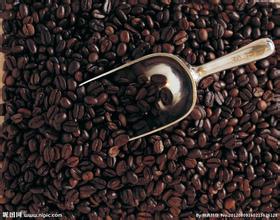Introduction to the quality characteristics of Ethiopian Coffee Origin Flavor description of acidity and bitterness
Introduction to the method of describing the flavor of Ethiopian coffee
Knowing certain coffee terms not only allows you to accurately express your understanding of coffee, but also makes your customers or friends feel that you are quite expert at coffee and are a coffee glutton.
Flavor [flavor] is the overall impression of aroma, acidity, bitterness, sweetness and mellowness, which can be used to describe the overall feeling of contrast coffee.
Acidity [acidity] is the acidity and strong quality of all coffee grown on the plateau. Unlike bitterness or sour (sour), it has nothing to do with pH, but a refreshing and lively quality that promotes coffee to exert its functions of boosting the mind and clearing the taste.
Body [mellowness] is the taste of coffee on the tongue after drinking the prepared coffee. The change of mellowness can be as light as water to light, medium, high, fat, and even some Indonesian coffee is as thick as syrup.
Aroma [smell] Aroma refers to the smell and aroma emitted by coffee after conditioning. Bouquet is a less commonly used word that specifically refers to the taste of ground coffee powder. Aroma is usually specific and comprehensive. The words used to describe Aroma include: caramel, carbon roasted, chocolate, fruit, grass, malt, rich, rich, spicy and so on.
Bitter bitterness is a basic sense of taste, the sensory area is distributed in the base of the tongue. The bitterness of dark baking is deliberately created, but the most common cause of bitterness is too much coffee powder and too little water. Bitterness is not a consent word for sour.
Bland [light] Coffee grown in lowlands is usually quite light and tasteless. Coffee with insufficient powdered coffee and too much water will have the same light effect.
After brewing Briny [salty] coffee, if it is overheated, it will produce a salty taste. The coffee in some coffee shops has this taste. Coffee trees are very similar to laurel and usually grow between the Tropic of Cancer and the Tropic of Cancer.
A coffee tree usually grows for about three to four years before it begins to bear fruit. the fruit is a red berry and a small number of yellow berries. After drying and removing the pulp, the coffee beans can be separated.
There are shadows of coffee beans all over the world, and they can grow as usual as long as the climate is right. These suitable places for growing coffee beans are located between the Tropic of Cancer and the Tropic of Cancer, generally between 25 degrees north latitude and 30 degrees south latitude, covering most countries in Central Africa, East Africa, Middle East, India, South Asia, the Pacific, Latin America and the Caribbean, collectively referred to as the "coffee growth belt". Coffee production zone coffee is mainly concentrated in this area, because coffee is very vulnerable to frost, and the temperature and humidity in the tropics are the most suitable for coffee growth. Coffee beans will grow into different species depending on farming methods, regional climate and various factors.

Important Notice :
前街咖啡 FrontStreet Coffee has moved to new addredd:
FrontStreet Coffee Address: 315,Donghua East Road,GuangZhou
Tel:020 38364473
- Prev

Introduction of Burundian Coffee Flavor description, characteristics of varieties and Grinding degree treatment
Burundian Coffee Bean introduction Burundian coffee was first brought in by the Germans in the 1900s; they found that bourbon was the best variety of coffee to grow in the local climate, which is usually a tropical plateau climate with a very large temperature difference between day and night. However, due to the suspension of investment in coffee research, bourbon became the only coffee variety left in the country, and one
- Next

Introduction to the quality of Peruvian Coffee Bean roasting, Flavor and Taste of Manor
The planting environment of Peruvian coffee beans introduces the planned cultivation of coffee in Peru, which has greatly increased coffee production. Its rich acidity and mellow smoothness are its most prominent features. Peruvian coffee has a soft sour taste, medium texture, good taste and aroma, and is an indispensable ingredient in the production of comprehensive coffee. High-quality Peruvian coffee with strong aroma and taste
Related
- Detailed explanation of Jadeite planting Land in Panamanian Jadeite Manor introduction to the grading system of Jadeite competitive bidding, Red bid, Green bid and Rose Summer
- Story of Coffee planting in Brenka region of Costa Rica Stonehenge Manor anaerobic heavy honey treatment of flavor mouth
- What's on the barrel of Blue Mountain Coffee beans?
- Can American coffee also pull flowers? How to use hot American style to pull out a good-looking pattern?
- Can you make a cold extract with coffee beans? What is the right proportion for cold-extracted coffee formula?
- Indonesian PWN Gold Mandrine Coffee Origin Features Flavor How to Chong? Mandolin coffee is American.
- A brief introduction to the flavor characteristics of Brazilian yellow bourbon coffee beans
- What is the effect of different water quality on the flavor of cold-extracted coffee? What kind of water is best for brewing coffee?
- Why do you think of Rose Summer whenever you mention Panamanian coffee?
- Introduction to the characteristics of authentic blue mountain coffee bean producing areas? What is the CIB Coffee Authority in Jamaica?

